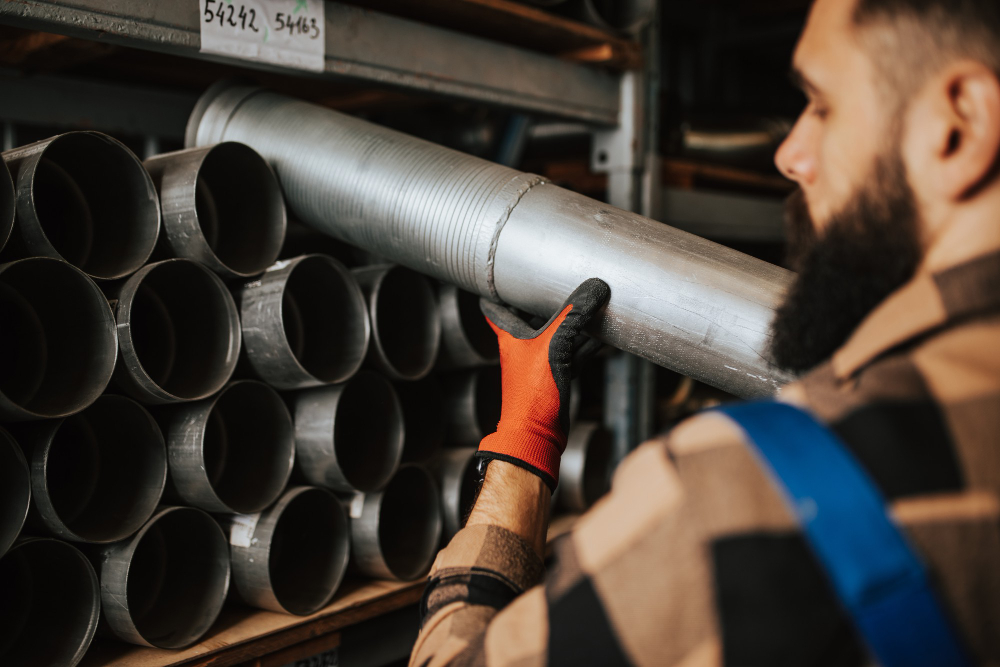Steel pipes, born out of William Murdoch’s ingenious thinking, have evolved into indispensable components, playing a vital role in various construction applications. Let’s embark on a straightforward journey, exploring the history, production process and uses of steel pipes for construction.
A Brief History Of Steel Pipes For Construction
In the 19th century, William Murdoch smartly used steel pipes for gas distribution, laying the groundwork for their wide-ranging role in construction. His clever ideas set the stage for steel pipes for construction we rely on today.

Understanding The Making Of Steel Pipes
- Shaping Pipes from Steel Skelp and Slabs
We start with heating steel skelp or slabs to make steel pipes for construction and other uses. This heating process makes the steel bendable, setting the stage for creating rigid and sturdy pipes. - Turning Raw Steel into Useful Forms
Once we have bendable steel, we shape it into cylindrical structures. These structures become the pipes that are crucial in construction and other applications. - Making Seamless Pipes with Steel Billets
For seamless pipes, we take an extra step by creating steel billets. This seamless design ensures the pipes are robust, reliable and ready for varied uses. - The Finishing Touch
After shaping, the pipes go through a straightening machine. This step is essential to ensure the pipes are straight and precise, meeting the necessary standards for construction. - Small and Large Bore Piping
Steel pipes come in different sizes. Fitting small and large bore piping gives us flexibility in using steel pipes for construction and various projects. - Maintaining Quality Standards
We have strict quality checks at every stage to ensure the steel pipes we use are up to the job. These checks guarantee that each steel pipe is strong, durable, and safe for use in construction.
Seeing The Various Uses Of Steel Pipes
- Meeting Structural Needs
Steel pipes play a significant role in construction, providing strength and stability. Whether used as columns or beams, they help make buildings solid and reliable. - Friction Piles and End Bearing Piles
Steel pipes act as friction and end-bearing piles in building foundations, offering solid support in different types of soil. - Versatile Scaffolding
Steel pipes are perfect for making scaffolding. Their strength and durability make them ideal for creating safe and stable platforms for construction work. - Manufacturing Applications
In manufacturing, we use steel pipes for various purposes like making bollards, guard rails and bike racks. Their toughness makes them a top choice for structures that need to last. - Steel Pipes for Transportation
For moving things underground, steel pipes are a go-to choice. Their durability and resistance to rust make them perfect for transporting products in different conditions.
Specification Of Steel Pipes For Construction
- Steel Pipe Schedule Numbers and NPS Numbers
When picking suitable steel pipes for construction, we look at the schedule and NPS (Nominal Pipe Size) numbers. These help engineers make intelligent choices for different projects. - Measuring Pipe Weight
We also measure the weight of the pipes precisely. That helps us know if the pipes are strong enough for specific construction jobs.
The Certification Process
Making sure our steel pipes are top-notch is crucial. Manufacturers keep detailed records in Material Test Reports (MTRs), noting down specific details like chemical composition and mechanical properties. This paperwork gives a stamp of approval, assuring the pipes meet industry standards.
Unleash Strength With Bigfoot Pipe & Piling!
Discover the durability of steel pipes for construction with Bigfoot Pipe & Piling. Boost your projects with our reliable solutions. From structural support to underground transportation, we’ve got you covered. Choose strength; choose Bigfoot Pipe & Piling. Your construction journey begins here.
